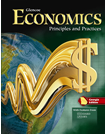"The International Monetary Fund"Introduction
Students have already learned that industrialized nations
provide external funding to the developing countries. This
financing can be direct aid, or it could be indirect aid to
international agencies such as the World Bank or the International
Monetary Fund (IMF). Countries wanting to set up an international
system of fixed exchange rates formed the IMF in 1944. Today,
the IMF offers advice to all nations on monetary and fiscal
policies. It also helps support the currency of some developing
nations with loans so that the countries can compete in an
open market. Lesson Description
Students will use information from the International Monetary
Fund Web site to find out more about the role of the organization.
Previous Knowledge Expected
Students should be familiar with the following term:
International Monetary Fund: international agency that
provides loans and financial assistance to countries to promote
international monetary cooperation and assist with economic
development, growth, and trade Applied Content Standards (from
the Council for Economic Education)
Standard 3: Different methods can be used to allocate
goods and services. People, acting individually or collectively
through government, must choose which methods to use to allocate
different kinds of goods and services.
Standard 18: A nation's overall levels of income, employment,
and prices are determined by the interaction of spending and
production decisions made by all households, firms, government
agencies, and others in the economy. Instructional Objectives
- Students will describe the purpose and areas of activity
of the International Monetary Fund.
- Students will describe the IMF's funding.
Student Web Activity Answers
- The IMF was created to "promote international monetary
cooperation; to facilitate the expansion and balance growth
of international trade; to promote exchange stability; to
assist in the establishment of a multilateral system of payments;
to make its general resources temporarily available to its
members experiencing balance of payments difficulties under
adequate safeguards; and to shorten the duration and lessen
the degree of disequilibrium in the international balance
of payments of members."
- The areas of activity of the IMF are surveillance (appraisal
of exchange rate policies), financial assistance, and technical
assistance.
- The IMF receives most of its funding from quota subscriptions
that member countries pay. These payments are due either upon
joining or after periodic reviews. In addition, the IMF may
borrow money to supplement the resources it has available.
- Student answers will vary.
Extending the Lesson
Encourage students to research further information about the
International Monetary Fund. Much of this information is on
the Web site. Students could also find current information
in newspapers and trade journals.
Encourage students to learn more about the IMF. Have students
role-play advisers to the IMF or a developing country. What
types of decisions and recommendations would they make?
| 






